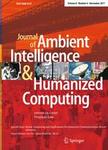版权所有:内蒙古大学图书馆 技术提供:维普资讯• 智图
内蒙古自治区呼和浩特市赛罕区大学西街235号 邮编: 010021

作者机构:Department of Electronics and Telecommunication Engineering Lovely Professional University Punjab Phagwara India Department of Computer Science and Engineering Lovely Professional University Punjab Phagwara India
出 版 物:《Journal of Ambient Intelligence and Humanized Computing》 (J. Ambient Intell. Humanized Comput.)
年 卷 期:2023年第14卷第8期
页 面:10811-10821页
核心收录:
学科分类:07[理学] 08[工学] 070105[理学-运筹学与控制论] 071101[理学-系统理论] 0710[理学-生物学] 0810[工学-信息与通信工程] 1205[管理学-图书情报与档案管理] 0711[理学-系统科学] 1201[管理学-管理科学与工程(可授管理学、工学学位)] 0901[农学-作物学] 0835[工学-软件工程] 0836[工学-生物工程] 081101[工学-控制理论与控制工程] 0701[理学-数学] 0811[工学-控制科学与工程] 0812[工学-计算机科学与技术(可授工学、理学学位)]
主 题:Convolution
摘 要:Damages to crops happen due to natural calamities, irregular fertilization, improper treatment, etc. Estimation of this damage is important in order to plan and execute corrective action strategies. To perform this estimation with high accuracy, both satellite and near-field images are needed. Satellite images assists in evaluation of damages due to natural calamities, while near-field images assist in evaluation of damage due to plant diseases. Separate models are designed for processing these images, which limits their correlative analysis;and thereby reduces overall accuracy of damage detection. To remove this drawback, this text proposes a deep convolutional network (DCN) design that integrates both near-field and far-field images in order to perform effective correlation. Moreover, design of an integrated model would assist researchers to identify and resolve dataset-specific performance gaps. The proposed model analyses different datasets, and estimates performance of context-sensitive classification methods. These are integrated to improve efficiency for multimodal augmented image classification deployments via correlative analysis. This analysis allows the system to predict crop-damages with higher efficiency than individual models. The model is trained for detection of areas which are infected by natural calamities, thereby assisting farm experts to undertake corrective measures based on specific area. Results of proposed model are compared with some of the recently developed state-of-the-art methods, and it is observed that the former model achieves 10% better accuracy, 8% better precision and 5% better recall performance. This evaluation is done on a large number of datasets, thereby assisting in model validation and estimating its usage for multiple type of crops. This text also recommends future research directions that can be undertaken for performance improvement of the underlying model. © 2022, The Author(s), under exclusive licence to Springer-Verla